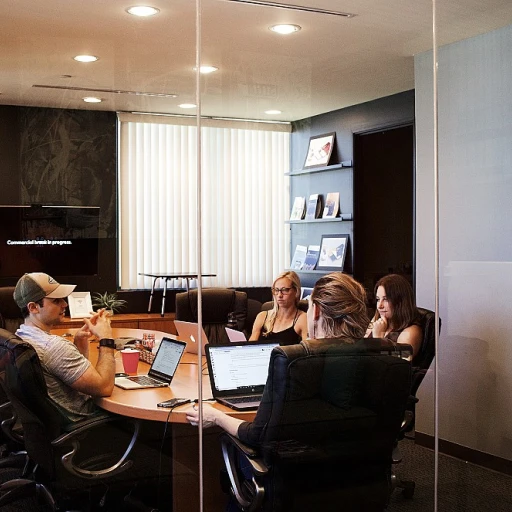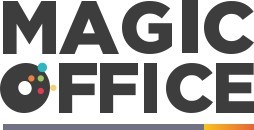
Understanding the Importance of a Ways of Working Template
The Backbone of Streamlined Operations
In the bustling sphere of business management, a properly crafted ways of working template is not merely a supplementary tool—it's a cornerstone of seamless operations. Successfully implementing a well-designed template can lead to enhanced productivity, support flexible working arrangements, and promote effective communication among team members. Imagine the chaos of a meeting without a clear agenda, or a project without a centralised plan; this is where the beauty of a structured template comes to the forefront. Streamlining workflows begins with a comprehensive guide that acts as a mutual agreement among employees, setting expectations and establishing team norms. When everyone is on the same page, tasks are more easily completed, saving considerable time and reducing misunderstandings. The overall work environment becomes more harmonious as teams adapt to a consistent method of operation. A carefully constructed template should foster collaboration and innovation by highlighting business processes that need improvement, offering a platform for employees to articulate challenges and solutions. From slide presentations in Google Slides to detailed project timelines, a robust template integrates management needs with team capabilities efficiently. As with any business tool, the applicability of templates will impact their success. It's crucial to tailor them to meet the specific demands and culture of your organisation for achieving effective ways of working. The impact of these templates can be maximised by consistent implementation across teams and periodic evaluations to ensure ongoing relevance and effectiveness in achieving business objectives. To truly embrace the potential of these frameworks, top-tier project management solutions like Dean Evans EMS can propel your efforts to new heights, offering enhanced coordination among teams and projects. Enhancing efficiency with Dean Evans EMS solutions explores how incorporating such systems can refine your strategy further, allowing for a comprehensive alignment with business goals.Key Components of an Effective Template
Essential Elements for a Robust Template
An effective template serves as the backbone for optimising workflows, facilitating efficient communication and collaboration among teams. To craft a template that truly enhances your organisational operations, it is crucial to understand its key components thoroughly. Incorporating these elements will ensure your template not only meets but exceeds business needs.
- Clear Communication Channels: Establish clear, open lines of communication within the team. Ensure that there are defined methods for providing updates and feedback through regular meetings or digital platforms like Google Slides or Slack.
- Defined Team Roles: Clearly outline each team member's responsibilities and roles to prevent confusion and overlap. This helps streamline project management and enhances teamwork.
- Structured Project Management: Integrate project management tools such as Gantt charts or timelines in your PPT slides to keep track of progress and deadlines efficiently.
- Work Norms and Agreements: Set the expectations for working conditions, including flexible working hours and remote work policies, to accommodate individual needs while maintaining productivity.
- Data and Task Monitoring: Embed a process for capturing and analysing data on ongoing tasks, ensuring that teams can monitor their performance and optimise workflow.
By incorporating these components, you'll lay a strong foundation for creating a template that suits diverse business environments and enhances efficiency and productivity with the Moveworks team. Applying these priorities can aid in building a work culture that aligns with established team norms and effective ways of working.
Customising the Template for Your Organisation
Tailoring the Template to Suit Your Team's Needs
In order to maximise the effectiveness of the ways of working template, it's crucial to customise it based on the unique needs and culture of your organisation. A one-size-fits-all approach rarely works in the dynamic business environment. Here's how you can adjust the template to align with your team's specific requirements and improve overall workflow efficiency.The first step involves gathering relevant data about your current work environment. This could be achieved through structured management meetings or informal team working discussions. Encourage employees to provide feedback on existing processes and suggest improvements. This input is invaluable in shaping a template that truly reflects your organisation's culture and the demands of your business.
- Understanding Team Norms: It's important to identify the existing team norms and communication styles. Understanding these elements helps in designing a template that aligns with the team's established ways of working, promoting smoother adoption.
- Flexibility and Adaptability: Consider incorporating flexible working options into your template. This might include guidelines on remote work, flexible hours, or other arrangements that cater to the varying needs of team members. By doing so, your template becomes more of a living document that evolves with your team.
- Incorporate Effective Communication Channels: Ensure your template highlights preferred communication channels, whether they are slide presentations during team meetings, email for formal agreements, or a project management tool for task tracking.
Once the template is drafted, present it in an engaging format. Using resources like Google Slides or PowerPoint presentations can make the content more accessible and engaging for your team. In addition, making the template available for download ensures everyone has easy access to this crucial document whenever needed.
Remember, customising the template isn’t a one-time task. Frequent evaluations and adjustments in response to business changes or team feedback will keep it relevant and effective. As your team becomes more accustomed to the template, integrating advanced features to refine processes further, such as advanced fire detection systems, might be beneficial.
Implementing the Template Across Teams
Rolling Out the Framework to Your Teams
Implementing the template across teams within your organisation involves careful planning and execution to ensure seamless adoption. Begin by presenting the template in a way that underscores its role in streamlining workflows and enhancing communication. Use a tailored PowerPoint presentation to introduce the template's features and benefits during a team meeting, highlighting its value in aligning with the company's working agreement.Here are some steps to effectively implement the template:
- Engage Team Members: Start by engaging with team members to demonstrate how the template can fit into their daily routines. Explain the gains in flexibility and efficiency when each aspect of the workflow is clearly outlined.
- Training Sessions: Organise training sessions to guide employees through the new workflow processes, using PowerPoint presentations or Google Slides to visualise each component. This ensures that everyone understands how to use and make the most of new practices.
- Feedback Mechanisms: Establish feedback mechanisms where teams can share their experiences with the template. Open channels of communication encourage improvement and ensure that the tool effectively meets the diverse needs of your work environment.
- Monitor and Adjust: As implementation progresses, continuously monitor its effectiveness, noting any challenges or resistance in adapting to the new ways of working. Adjust the template as necessary to better align with specific project management needs or team norms.
By implementing the template thoughtfully, it merges with existing workflows and becomes a cornerstone of effective team working. Leveraging a well-structured working ppt can significantly improve your business data's articulation, ultimately contributing to a more cohesive work culture.
Monitoring and Evaluating Template Effectiveness
Assessing the Impact of Your Template
Once your ways of working template is in place, it’s crucial to monitor its effectiveness. This involves gathering data on how well the template is being adopted across teams and whether it is meeting the intended objectives. Regular feedback from team members can provide insights into any adjustments needed to enhance its effectiveness.
Utilizing Feedback for Continuous Improvement
Encourage open communication among employees to gather constructive feedback. This can be done through regular meetings or surveys, allowing team members to express their experiences and suggest improvements. An effective template should evolve based on this feedback, ensuring it remains relevant and beneficial to the work environment.
Tracking Key Performance Indicators (KPIs)
Implementing KPIs related to the template can help in measuring its success. Consider metrics such as time saved, improved communication, and enhanced project management efficiency. These indicators can provide tangible evidence of the template’s impact on business operations.
Adapting to Changing Needs
As your organisation grows and changes, so too should your template. Flexibility is key to maintaining an effective work culture. Regularly review the template to ensure it aligns with current business goals and team norms. This adaptability will support a dynamic work environment and promote effective ways of working.
Overcoming Common Challenges in Adoption
Overcoming Hurdles in Implementing the Workflow Template
While implementing a comprehensive template can significantly streamline operations, the adoption process isn't without challenges. To foster a seamless transition and ensure lasting effectiveness, it's crucial to address common roadblocks that teams may encounter.
Resistance to Change: Employees may show resistance due to the shift in their daily work routines. To mitigate this, engage team members early in the process. Host interactive meetings and presentations, perhaps using Google Slides or PPT PowerPoint, to get everyone on the same page. Effective communication about the benefits and goals can go a long way in easing apprehensions and encouraging cooperation.
Lack of Understanding: Team members might struggle to fully understand the new ways of working and the template's components. Tailor training sessions to different learning styles, incorporating slide presentations and hands-on workshops. Frequent checkpoints and open communication channels help clarify doubts and reinforce understanding.
Alignment with Current Work Environment: Ensuring that the template fits into existing team norms and work culture is vital. Customise the template to align with current team dynamics and the overall business objectives. This also involves being open to adjusting the template over time as feedback from employees provides new insights.
Monitoring and Feedback: After implementation, continuous monitoring and gathering data on its effectiveness can be a stumbling block if not handled correctly. Establish a clear feedback mechanism and schedule regular follow-ups to assess how the template is enhancing team productivity. Use tools and data from project management software to gather insights and make necessary adjustments.
Addressing these challenges head-on with sincerity and strategic planning ensures the working agreement becomes an integral part of the team's workflow, enhancing overall efficiency and productivity within the organisation.













